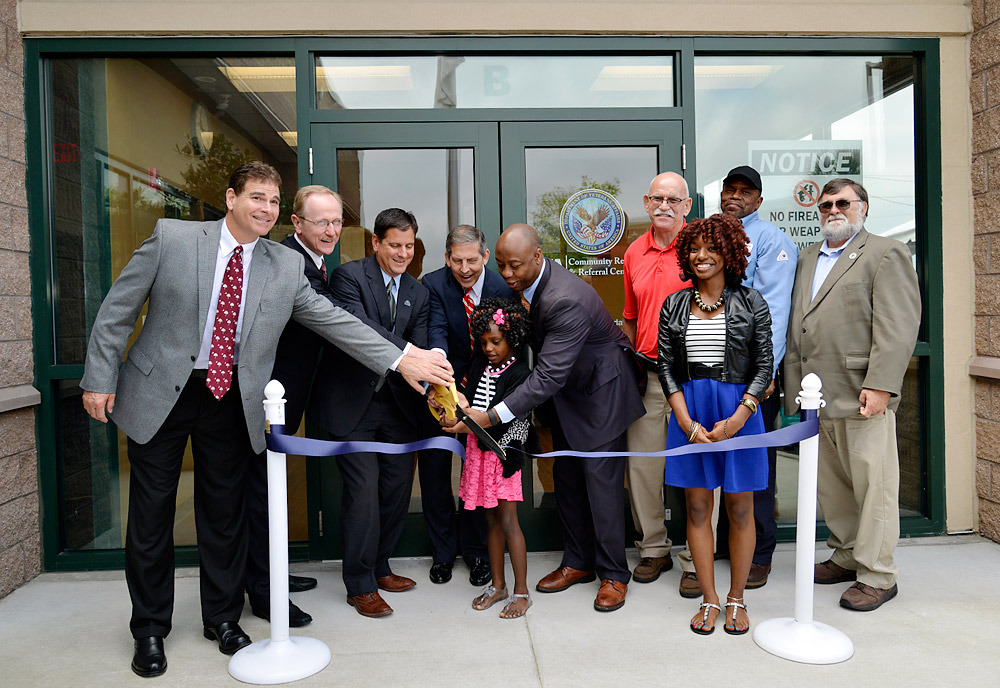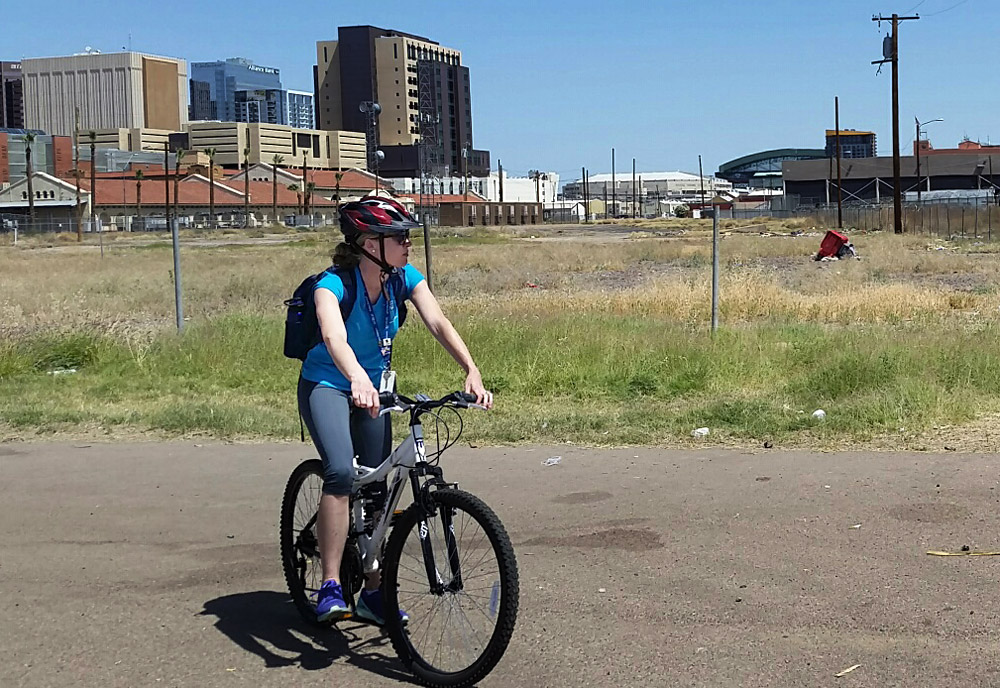Veterans Health Administration
VA, Communities, Helping Homeless Veterans

Ribbon cutting ceremony for the Community Resource and Referral Center in Charleston, South Carolina.
Some of the really great things being done to help homeless Veterans are taking place every day at VA’s Community Resource and Referral Centers (CRRC). Here are just a few of their impressive success stories:
— Homeless Veteran M is 60 years old and will not be parted from his two cats. After his wife and mother died, he did not have enough money to pay his rent so he was evicted. He put all his belongings in a storage locker but then did not have enough money to pay the storage fee and was about to lose all his belongings. Gil, with the Community Resource and Referral Center, found a way to get him some money to pay his storage fee, hooked him up with some job possibilities and is helping him find a home ... for him and his cats.
There are 29 VA Community Resource and Referral Centers around the country. As national director Eileen Devine describes them, “The CRRCs, by design, are a low-barrier, central access point for resources and referrals for homeless Veterans, where they can receive rapid and comprehensive services.
“We see the positive results every day. In FY2014, there were over 20,000 Veterans who accessed services through the CRRCs, and we anticipate that by the end of FY15 we will have exceeded this number.”
— Mike works at one of VA’s CRRCs and is also an umpire. He found out that two of the other umpires were Veterans and were not doing well. One was homeless and was “couch hopping” among family members. The other Veteran had not worked in two years. Both were showing signs of depression and drinking problems. Mike convinced them both to come into the CRRC to seek services. One Veteran now has a full time job. The other Veteran thanked Mike for getting him to come in talk with the folks at the CRRC and that it has given him the desire to improve himself and put a positive spin on things.
Homeless Veterans on the street need help. Help finding housing, a job or financial assistance, or access to health care. Maybe it’s just access to some basics — a place to get food, a shower, a change of clothes or a place to do laundry, or a ride to the medical center.
“There needs to be coordinated efforts to fully utilize all the resources available.”
Fortunately, for an increasing number of these men and women, Community Resource and Referral Centers are there to help. CRRC programs are places where Veterans who are homeless or at risk of homelessness can get connected to stable housing and an array of supportive services. CRRCs provide a “one-stop shopping” opportunity in many densely populated, strategically located sites across America.
— CRRC employee Terry helped a Veteran who had just moved into his state find a job. The Veteran was approved for a gas card but could not leave his new job and did not have enough gas ... or money ... to get home. So Terry left his office and picked up the card and took it to the Veteran, who was very grateful.
Devine explains: “The CRRCs are a key component of VA’s initiative to end homelessness among Veterans and for good reason. We know that in order to end Veteran homelessness in our communities, there needs to be coordinated efforts to fully utilize all the resources available within that particular community.

VA CRRC staff on bicycles search for homeless Veterans wherever they are.
“In addition to maximizing all of these resources, we need to also create the lowest barrier possible to all services. This enormous goal cannot be realized without very active communication and teamwork both within the VA homeless program and the larger community of homeless service providers.”
— When CRRC employee John met Veteran X, he learned that he had been sleeping in his trailer for several years with no running water or electricity and in 100 degree Phoenix temperatures. He cited posttraumatic stress disorder, military sexual trauma and termination from his last job as his reasons for not looking for employment. John found a safe place for him at the James Walton House even though he said he’d rather be alone. John encouraged him to socialize with other residents and to work with the CRRC employment specialist. He not only made great progress but earned the nickname “Handyman” for rebuilding furniture, repairing the refrigerator and helping in the kitchen. Veteran X is now more positive about life and very thankful for everything VA has done for him.
Many CRRCs across the country are the points-of-contact for community lead efforts to end homelessness. Veterans are benefiting through immediate and direct referrals to the most appropriate services needed to resolve their particular situation rather than going from one agency after another to find help.
CRRCs also conduct street outreach to engage homeless Veterans who, for a variety of reasons, have not come in seeking services on their own. This translates to an increase in CRRC services being offered and an increase in low-barrier access to services for Veterans who need them.
As director Devine notes, “The CRRCs and their staff are not only providing vital and tangible resources to homeless Veterans but are seeking to refine and improve the systems these Veterans inevitably must engage in their search for assistance.
“Although it is a massive job we’ve asked them to do, they manage to do it exceptionally well.”



















